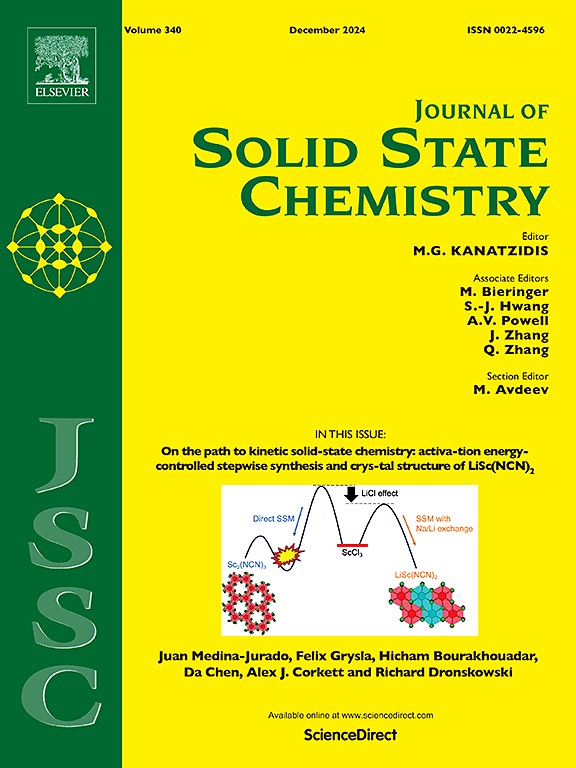Superheated steam-induced phase transformation of layered aluminosilicates
IF 3.2
3区 化学
Q2 CHEMISTRY, INORGANIC & NUCLEAR
引用次数: 0
Abstract
This study demonstrated that phase transformations of solid-state materials can be accelerated by processing under superheated steam―a dry vapor relevant to both Earth's crust and industrial environments. Here, layered aluminosilicates were used as a model system to investigate the thermal behavior of inorganic materials under superheated steam. Specifically, kaolinite―a two-dimensional materials with Al and Si homogeneously within its stacked layers―was calcined under superheated steam and compared to conventional calcination. In the 400–600 °C range, dehydroxylation of kaolinite was shifted to higher temperature under superheated steam. This result indicated the hydroxyl-bearing inorganic structures can be preserved at relatively higher temperatures in superheated steam environments. Above 1000 °C, the transformation of metakaolinite―an amorphous layered aluminosilicate formed via dehydroxylation of kaolinite―into mullite and cristobalite was accelerated, with both phase appearing at temperatures ∼100 °C lower than in air. Solid-state 29Si nuclear magnetic resonance spectra revealed increased Si content in mullite formed under superheated steam, confirming enhanced mullitization. However, complementary analyses using X-ray diffraction and scanning electron microscopy showed that cristobalite particles grew more rapidly than mullite, suppressing its crystallinity under superheated steam conditions. These results reveal that superheated steam not only facilitates phase transformation in layered aluminosilicates but also modulates the competitive crystallization dynamics between mullite and cristobalite offering new opportunities for advanced inorganic processing.

层状铝硅酸盐的过热蒸汽诱导相变
这项研究表明,固态材料的相变可以通过过热蒸汽(一种与地壳和工业环境相关的干蒸汽)的处理而加速。本文以层状硅酸盐铝为模型体系,研究了无机材料在过热蒸汽作用下的热行为。具体来说,高岭石是一种二维材料,在其堆叠层中均匀地含有Al和Si,在过热蒸汽下煅烧,并与传统煅烧进行了比较。在400-600℃范围内,高岭石的脱羟基作用在过热蒸汽下转移到更高的温度。结果表明,在过热蒸汽环境中,含羟基无机结构可以在相对较高的温度下保存。在1000℃以上,偏高岭石(一种由高岭石脱羟基作用形成的无定形层状铝硅酸盐)转变为莫来石和方石石的速度加快,在温度低于空气温度100℃时,这两种相都出现。固态29Si核磁共振谱显示,在过热蒸汽下形成的莫来石中Si含量增加,证实了莫来石的增强。然而,利用x射线衍射和扫描电子显微镜进行的互补分析表明,方石英颗粒比莫来石生长得更快,这抑制了其在过热蒸汽条件下的结晶度。这些结果表明,过热蒸汽不仅促进了层状铝硅酸盐的相变,而且调节了莫来石和方石英之间的竞争结晶动力学,为先进的无机加工提供了新的机会。
本文章由计算机程序翻译,如有差异,请以英文原文为准。
求助全文
约1分钟内获得全文
求助全文
来源期刊

Journal of Solid State Chemistry
化学-无机化学与核化学
CiteScore
6.00
自引率
9.10%
发文量
848
审稿时长
25 days
期刊介绍:
Covering major developments in the field of solid state chemistry and related areas such as ceramics and amorphous materials, the Journal of Solid State Chemistry features studies of chemical, structural, thermodynamic, electronic, magnetic, and optical properties and processes in solids.
 求助内容:
求助内容: 应助结果提醒方式:
应助结果提醒方式:


